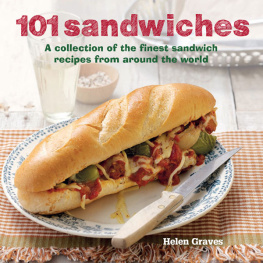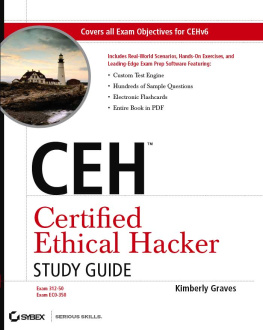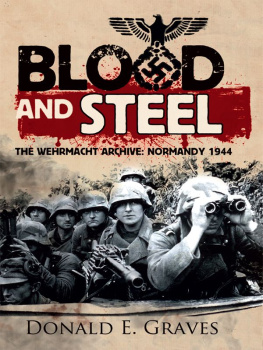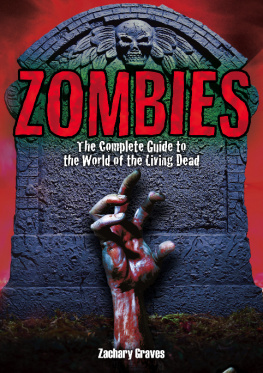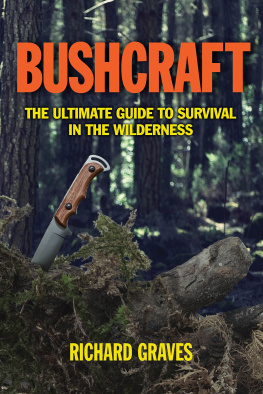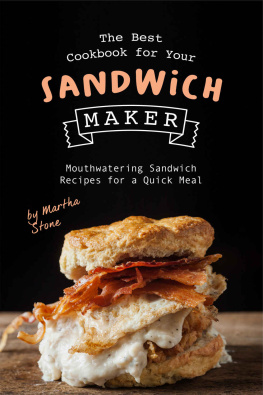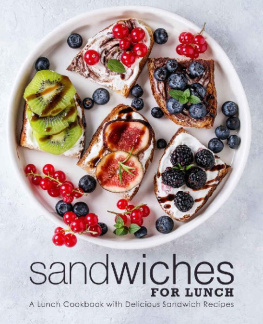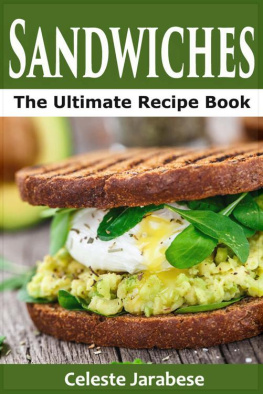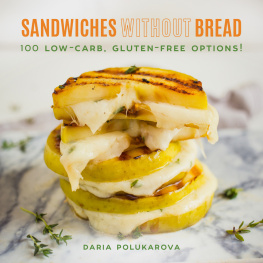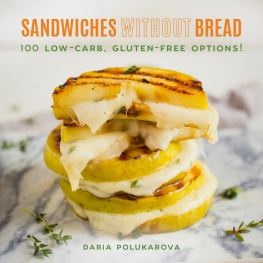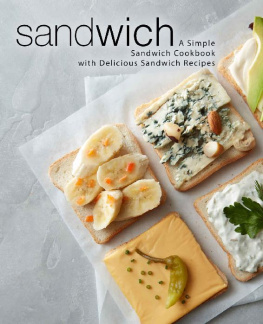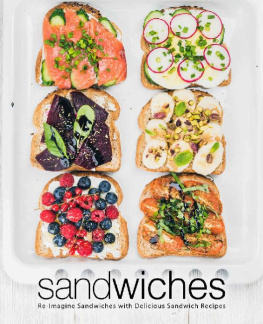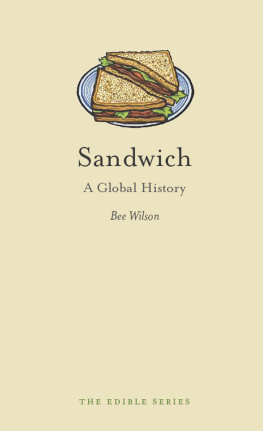101 sandwiches
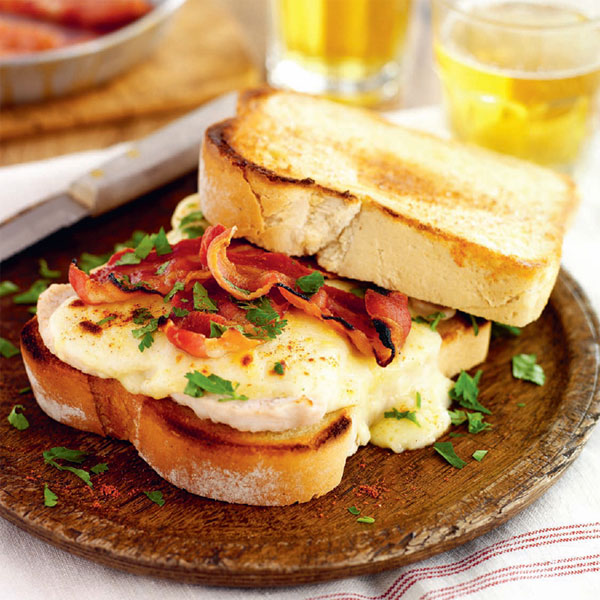
101 sandwiches
A collection of the finest sandwich recipes from around the world

Helen Graves

Published in 2013 by Dog n Bone Books An imprint of Ryland Peters & Small Ltd 519 Broadway, 5th Floor,
New York, NY 10012
2021 Jockeys Fields,
London WC1R 4BW
www.rylandpeters.com
10 9 8 7 6 5 4 3 2 1
Text Helen Graves 2013
Design and photography
Dog n Bone Books 2013
The authors moral rights have been asserted. All rights reserved. No part of this publication may be reproduced, stored in a retrieval system, or transmitted in any form or by any means, electronic, mechanical, photocopying, or otherwise, without the prior permission of the publisher.
A CIP catalog record for this book is available from the Library of Congress and the British Library.
eISBN: 978 1 782492 99 3
ISBN: 978 1 909313 16 3
Printed in China
Editor: Anne Sheasby
Designer: Alison Fenton
Photographer: Stephen Conroy except pages by Rob White
For digital editions, visit www.cicobooks.com/apps.php
ACKNOWLEDGMENTS
I would like to thank Pete at Dog n Bone Books for finding me and for recognising that sandwiches are ACE. Thank you also to Donald for his appetite, his support, his advice, and his ability to keep me sane. Finally, thanks to mum and dad, for making sure the fridge was always so well stocked with things to put between bread.
Welcome to the world of sandwiches! The humble sarnie, sanger, butty, bap, whatever you want to call it, is one of the most versatile, convenient, and popular meals in the world. I will be your guide on this tour of the best examples ever created and I am well qualified to do so, since I am a sandwich addict.
My obsession began at a young age when I would construct ideal, dream sandwiches in my sleep, only to wake up grasping at the air above me pointlessly, trying to reach out and touch my tasty creations. The fanaticism continued into teenage years as I entered a phase of building absolute monsters (very much la Dagwood on ), using whatever my unwitting parents thought they had safely stashed in their refrigerator. It all went in: cold cuts, cheeses, garnishes, relishes, mayo, scallions (spring onions), pickled onions, anything. Nothing was safe. This, of course, led to some major disasters, but it was an important sandwich learning curve and laid the foundations for a lifelong love.
I think its important we start by laying down some ground rules for when it comes to making, buying, eating, and defining sandwiches, starting with the absolute basics.
So what exactly is a sandwich? At first, this question may seem ridiculous, but actually Ive encountered strong opinions about what does and what does not constitute one. Obviously, a filling between two slices of bread is a sandwich. What about a burger though? Or a wrap? And lets not even get started on the open-faced sandwich. Okay lets. This, in my mind, does not really qualify. If it did, then surely we could call everything on toast a sandwich? Beans on toast would be a sandwich, as would mushrooms on toast, spaghetti on toast well just about anything on toast, basically. Or is it the toasting of the bread that disqualifies stuff on toast from the sandwich category? Perhaps only untoasted bread can make an open-faced sandwich. Everything else Im prepared to let in to the sandwich fold. Wraps, kebabs, burgers, even hot dogs; as long as they involve a filling wrapped, clamped, or, indeed, sandwiched, in some sort of bread.
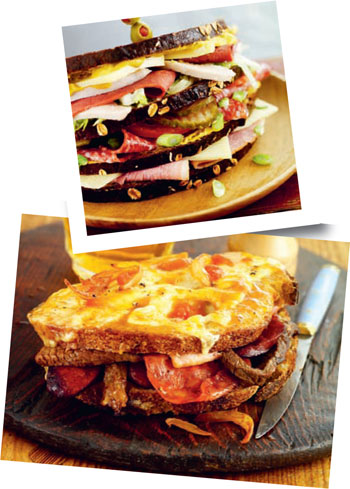
There are some basic rules one must adhere to when making a sandwich, and yet there are some sandwiches that break them all. Lets take a simple ham and tomato filling as an example. Every sandwich should be constructed with proper care, attention, and love. The bread must be fresh and of good quality; there is a time and a place for cheap plasticy bread, but it is rare and should be kept that way. In the case of the ham and tomato, Id go with a very fresh farmhouse white. Then theres the butter, which must be at room temperature and therefore spreadable; there is nothing (nothing) more rage-inducing than tearing a hole in the bread because the butter is too hard. The quality of the fillings is obviously of paramount importance; the ham must be proper cooked ham, thickly sliced off the bone (none of that shiny, reformed rubbish), and the tomato must be perfectly ripe and fragrant. If lettuce is to be added, then this should be used as a barrier betwixt bread and tomato; the structural integrity of the sandwich must always be preserved, and that means avoiding placing tomato next to bread if at all possible. One runs the risk of inducing sogginess as tomato juice slowly soaks into the bread; it is one of the most unpleasant and unfortunate events in the sandwich world. If there is no lettuce or the sandwich contains just tomato, then consumption must be immediate. And what about cutting? In half? Into quarters? Fingers? Triangles or squares? Crusts on or off? All these questions before weve even considered different types of bread.
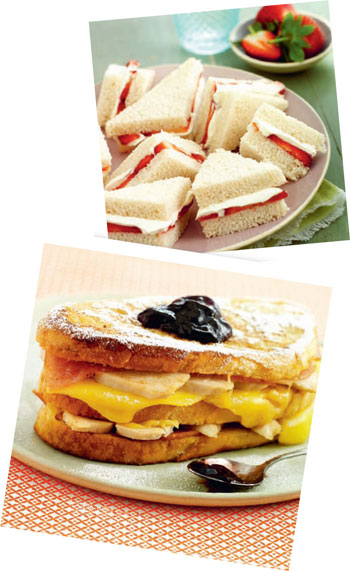
White; whole-wheat (brown or wholemeal); whole-grain (granary); ciabatta; bolillo; telera; focaccia; flatbread; pita bread (pitta); roll; sub; mo; tortilla; hot dog bun; burger bun; brioche; baguette; bagel; rye; sourdough; challah; mantou; the list is long and many of the breads just listed can be found in this book, while there are still many more to enjoy. Fillings are just as numerous, but what you will find within these pages are established sandwiches from around the world; some are classics and fairly ubiquitous, while others, Im hoping, are completely new to you. Rest assured, however, that somewhere in the world, each of these sandwiches is celebrated.
.
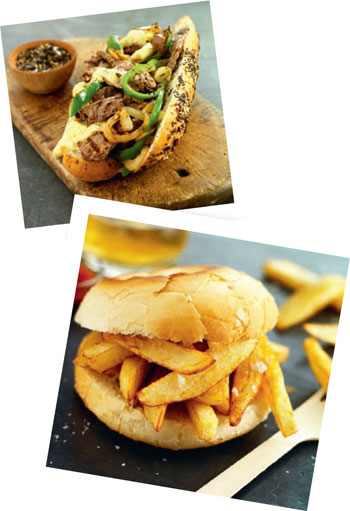
Its not just excess that defines a sandwich as outrageous however; what about the issue of double carbs? Im talking sandwiches like the Chip Butty (). Its hard to believe, but some people are genuinely against the idea of double-carbing, believing it to be in some way wrong. This is nonsense. Are they suggesting we forgo the pleasure of freshly salted and vinegared chips, hot and crisp, layered onto thick white bread and smothered with brown sauce, steak sauce, or ketchup? Are we to deny a filling a place in a sandwich simply because it doesnt fall into the category of vegetable or protein? My point is that exclusivity in the sandwich world should not be tolerated, which reminds me to mention my disdain for the habit of creating the worlds most expensive sandwiches; part of the appeal of the sandwich is that it is a foodstuff accessible to all. I firmly believe it should remain so.
There are plenty of places to buy sandwiches, but not all those places are safe. The hierarchy of sanger-purveying outlets goes something like this: at the bottom, we have the roadside gas stations. These places are the absolute pits, selling only over-chilled, pallid bread that sticks to the roof of your mouth, and bland watery fillings of consistently crappy quality. These kinds of sandwiches have seen the steady demise of once great fillings such as coronation chicken; sitting on a shelf for a week in something called an artificially protected environment doesnt do food any favors, funnily enough.

